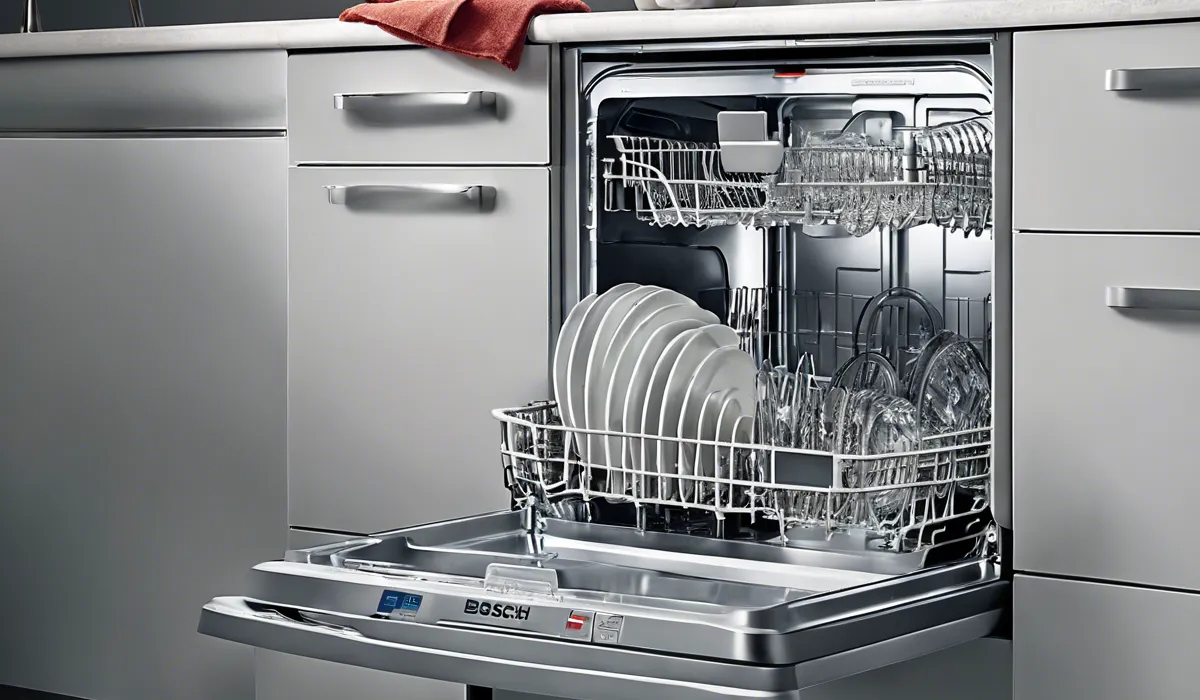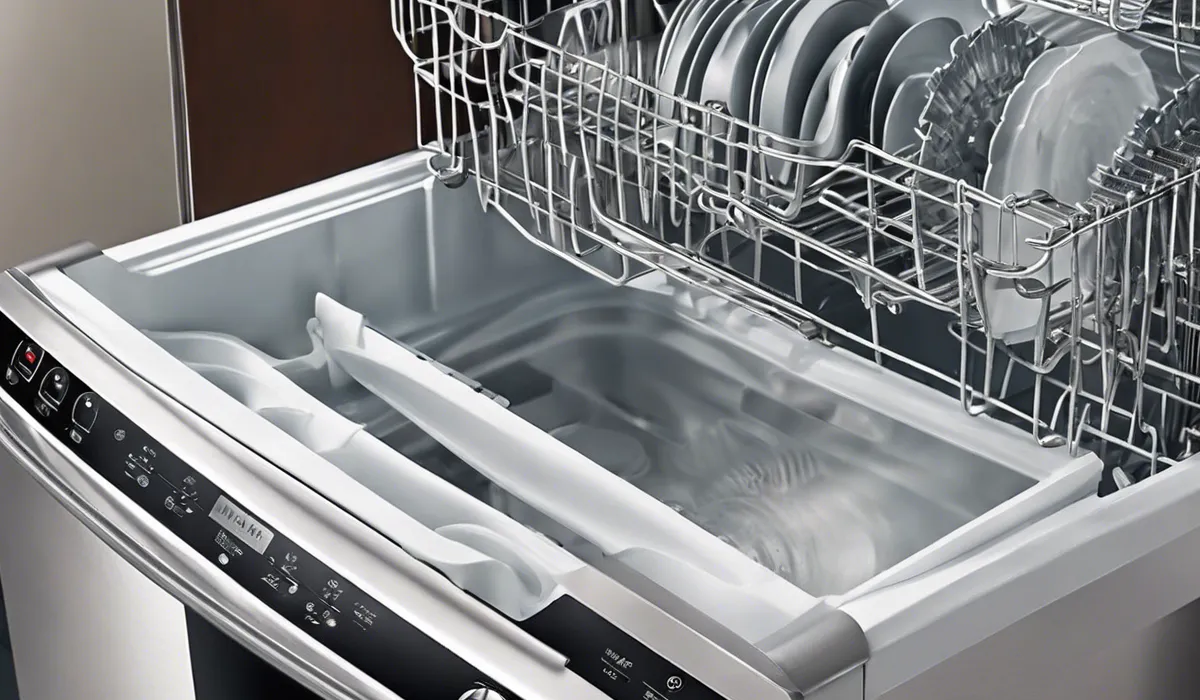What to Do with Rubber Flap on Bosch Dishwasher: Quick Fixes
The rubber flap on a Bosch dishwasher is a backflow prevention valve. It should be attached to the bottom of the appliance, near the back, to prevent wastewater from returning into the dishwasher. Ensure it is intact and properly positioned for optimal functionality. Do not remove it.
Understanding the Rubber Flap on Your Bosch Dishwasher

Function of the Rubber Flap
The rubber flap inside your Bosch dishwasher serves a critical role in the appliance’s operation. Its primary function is to prevent water from leaking out during the wash cycle, ensuring that your kitchen remains dry and safe.
Additionally, this simple yet essential component acts as a barrier for debris, keeping larger particles from re-entering the wash area and potentially clogging the drain system.
Locating the Rubber Flap
Identifying the rubber flap in your Bosch dishwasher is straightforward. It is typically found at the bottom of the dishwasher, near the back.
Look for a flexible piece attached to the dishwasher’s structure, which should be in place to prevent wastewater from returning to the dishwasher. It is crucial to ensure that it is intact and properly positioned to maintain optimal functionality.
Variations Across Models
Bosch dishwashers come in various models, each perhaps featuring slightly different components.
While the function of the rubber flap remains consistent, the design and material might vary. It’s important to refer to your specific model’s manual or contact Bosch customer service for information tailored to your dishwasher.
Maintenance of the Rubber Flap

Cleaning the Rubber Flap
Regular cleaning of the rubber flap in your dishwasher is essential for maintaining its function and longevity. Begin by removing any debris that has collected around the flap.
Then, use a soft cloth or sponge dampened with warm, soapy water to gently clean the flap. Avoid using abrasive cleaners or tools that could damage the rubber. Rinse thoroughly with clean water and dry with a towel.
Inspecting for Damage
While cleaning, inspect the rubber flap for any signs of wear or damage, such as cracks, tears, or a loss of flexibility.
These are indicators that the flap may not be sealing properly and could be due for a replacement. Regular inspection can prevent leaks and other dishwasher malfunctions.
Troubleshooting Common Issues
If you notice improper sealing or hear unusual noises during the dishwasher’s operation, it might be related to the rubber flap.
Check to ensure that it is not obstructed or incorrectly installed. If the issue persists after cleaning and inspection, consider seeking professional advice or looking into a replacement.
Replacing or Repairing the Rubber Flap

When to Replace the Rubber Flap
The rubber flap should last for several years, but its lifespan can be affected by factors such as usage frequency and water hardness.
If you notice persistent leaks, a flap that no longer fits securely, or visible damage, it may be time to replace it. Replacing a worn flap will help maintain your dishwasher’s performance and prevent potential water damage.
Step-by-Step Replacement Guide
Replacing the rubber flap is usually a straightforward process. First, ensure the dishwasher is powered off and empty.
Carefully remove the old flap by unhooking it from its position. Clean the area before fitting the new flap in place, ensuring it is properly seated. After installation, run a short cycle to check for leaks and proper operation.
Safety Precautions and Tips
Always prioritize safety when performing maintenance on your dishwasher. Ensure the appliance is disconnected from the power source to prevent any electrical hazards.
Wear gloves to protect your hands, and if you’re unsure about the process, don’t hesitate to consult a professional or refer to the manufacturer’s guidelines.
Finding the Right Replacement Parts
When searching for a new rubber flap, you have the option of choosing between OEM (Original Equipment Manufacturer) parts or aftermarket alternatives.
OEM parts are designed specifically for your dishwasher model and are generally recommended for a guaranteed fit. Aftermarket parts may be less expensive but ensure they are compatible with your Bosch dishwasher to avoid any issues.
FAQs About Bosch Dishwasher Rubber Flap
What is the purpose of the rubber flap on my Bosch dishwasher?
The rubber flap is a backflow prevention valve designed to prevent wastewater from returning into the dishwasher.
Where should the rubber flap be located on my Bosch dishwasher?
It should be attached to the bottom of the dishwasher, near the back.
What should I do if the rubber flap on my Bosch dishwasher is not in place?
Ensure it is intact and properly reposition it to its designated spot for the dishwasher to function optimally.
Can I remove the rubber flap from my Bosch dishwasher for cleaning or maintenance?
Do not remove the rubber flap as it is essential for preventing water backflow into the dishwasher.
What should I do if the rubber flap on my Bosch dishwasher is damaged?
If the rubber flap is damaged, it should be replaced to ensure the dishwasher continues to function properly and to prevent water backflow.
Final Thoughts
The rubber flap in your Bosch dishwasher serves as a crucial backflow prevention valve. It is essential to ensure that this component is securely attached at the base of your appliance, near the rear.
This positioning prevents wastewater from re-entering the dishwasher, thus maintaining its proper function. Remember, this part should not be removed to preserve the appliance’s integrity and performance.
Useful Resources
- https://ocp.dc.gov/sites/default/files/dc/sites/ocp/page_content/attachments/nigplist.pdf
- https://onfarmfoodsafety.rutgers.edu/wp-content/uploads/2021/07/Cornell-University-Fact-sheet-Cleaning-Produce-Washing-Equipment-Conveyor-Washing-System-Checklist.pdf
- https://portal.facilities.unc.edu/masterpg/inventory.aspx





